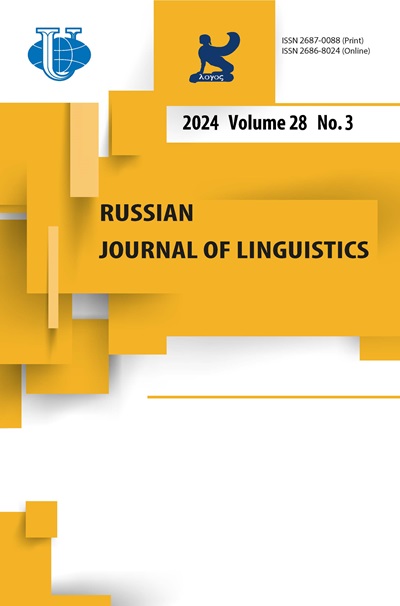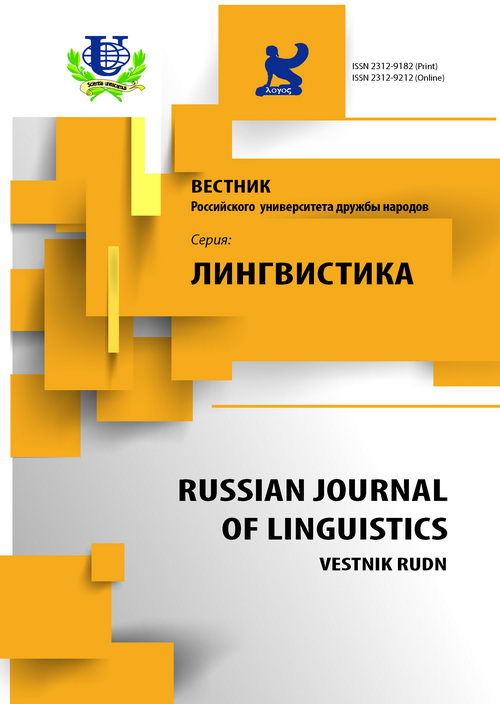Translation of Onomatopoetic Component in Onomastics
- Authors: Sokolova A.V1
-
Affiliations:
- Moscow State Linguistic University
- Issue: No 3 (2015)
- Pages: 132-142
- Section: Articles
- URL: https://journals.rudn.ru/linguistics/article/view/9432
Cite item
Full Text
Abstract
This article covers the topic of the description of translation strategies of onomatopoetic component of proper names. The term of onomatopoetic proper names is introduced for the first time. The article is the fist work that gives a view of onomatopoetic component in proper names on the material of English proper names, product names, electronic resources, theatre plays and cartoon titles. Onomatopoeia in onomastics is seen form the viewpoint of sociolinguistics. Being an aspect of literary onomastics, onomatopoetic proper names are considered to be a functional and semantic word mark (meaning-creating and text-forming) that serves as an individualizing and characteristic device. However examples of onomatopoeia in onomastics are seen not only in imaginative literature but also in advertisements and commercials. Onomatopoetic component is a unique device that allows to verbalize lingvocultural aspects of proper names. These names are pleasant to hear and easy to remember. They help to make up brand names. Translation strategies include two techniques: translator often resorts to borrowings, in other words transliterateration or transcription of the original onomatopoeia, or makes situational equivalents like occasionalisms or oral speech equivalents to render the expressive, stylistic and evaluative components of meaning of such proper names. This article will give an example of both these techniques and deduce the most affective strategies that can be applied to translation of onomatopoetic component of proper names.
Keywords
About the authors
Anna V Sokolova
Moscow State Linguistic University
Email: adoni@mail.ru
Translation department
References
- Hiroko Inose. Translating onomatopea and mimetic words. Universidad Granada, Spain, 2003.
- Боинг-боинг (Англоязычный портал для блогов) (online). URL: http://boingboing.net.
- Влахов С., Флорин С. Непереводимое в переводе. М.: Высшая школа, 2012.
- Ермолович Д.И. Имена собственные: теория и практика межъязыковой передачи. М.: Р. Валент, 2005.
- Иркутский академический драматический театр имени Н.П. Охлопкова (online: Электронный ресурс театра-постановщика пьесы «Боинг-боинг или ужин по-французски» в России). URL: http://www.dramteatr.ru/spectacle/boing-boing-ili-uzhin-po-francuzski-nachalo.
- Конрад Н.И. Синтаксис японского национального литературного языка // Товарищество иностранных рабочих СССР. М., 1937.
- Пенская И.Е. Имена собственные в русских народных сказках и способы их передачи на английский язык: дисс.. канд. фил. наук. М., 2008.
- Подшибякина А.А. Ономатопоэтическая лексика в японском языке. М.: Муравей, 2003.
- Мистер Трололо // Российская газета. Москва: (online), 2010. URL: http://www.rg.ru/2010/ 03/18/hil.html.
- Румак Н.Г. Теоретические и практические проблемы межъязыковых соответствий: на примере перевода ономатопоэтической лексики в японском языке: дисс.. канд. фил. наук. М., 2007.
- Суперанская А.В. Общая теория имени собственного. М.: Наука, 1973.
- Твиттер (Русскоязычная и англоязычная версия) (online). URL: https://twitter.com.
- Фролова Е.Л. Японский язык. Имена собственные. М.: Муравей, 2004.

















